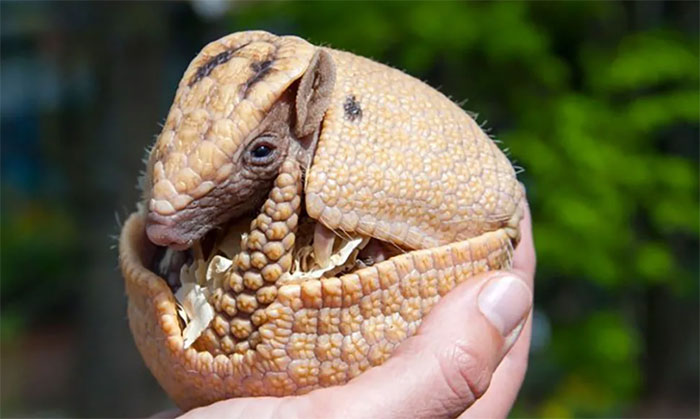Some animals can pause ... pregnancy
Although since the 1850s, scientists have known that some animals have this ability, but until recently it has become more pronounced regarding pregnancy, stem cells and cancer. of human.
In fact, there are more than 130 species of mammals that can . suspend pregnancy. Pauses can last anywhere from a few days to 11 months. In most species (except for some bats, they do it a little later) this happens when the embryo is a small ball of about 80 cells, before it attaches to the female's uterus.
It is also not just a group of mammals. Many species seem to have developed the ability needed to reproduce more successfully. Most predators can halt their pregnancy, including bears and most seals, many rodents also have this ability.

The main advantage of stopping pregnancy is that it separates mating and delivery.
Keeping a record of the length of pregnancy pause is a small kangaroo called Tammar Wallaby that has been extensively studied for its ability to hold embryos for 11 months.
The main advantage of stopping pregnancy is that it separates mating and delivery. There are two main ways that animals do this.
- The first is to mate immediately after giving birth, preventive pregnancy in case something happens to the newborn. The stress of breastfeeding causes a long pause in the suckling process, and pregnancy begins again when the calves grow up.
- The second way is to pause each pregnancy until the appropriate time (usually depends on the season). For example, ferrets mate around early March but stop the embryos until after the equinox (March 21), when the days are longer in the houses in their northern hemisphere. This ensures that ferrets are born in the spring when conditions improve rather than in the winter.
Tammar Wallaby combines these two methods to pause for nearly a year and give birth in January. This ensures the babies leave the mother bag in the following spring instead of the middle of the hot summer in Australia.
The swap was first identified in 1854 after hunters in Europe noticed that deer pregnancy seemed to be much longer than normal. Since then, scientists have been fascinated by this process and it has helped us to understand more about the basic reproductive processes in all mammals.
But by 1950, our knowledge of pregnancy had increased enough to confirm what the hunter had observed 100 years earlier.
But how the process works at the molecular level remains a mystery. Until recently, there appeared to be no link between which species used it and which did not seem to have a unified mechanism for suspended pregnancy. Even the control hormones differ among mammal groups.
However, research now shows that regardless of which hormone affects the uterus, the molecular signals between the uterus and the embryo are preserved, at least between mice, ferrets and Tammar wallaby.
Understanding how mammals halt their pregnancy is important for our understanding of how to create healthy embryos. It can also help create better stem cells and find new ways to treat cancer.
- You need a break, a smart 'cage' is a perfect choice
- Animals have morning sickness like humans?
- Decode the mystery of false pregnancy
- Keep track of the entire magical pregnancy journey of women in 2 minutes!
- How to use a pregnancy test stick and how to read the most accurate pregnancy test results
- First pregnancy is easy to miscarry the next time
- Why do women crave bizarre food during pregnancy?
- Pregnancy age and difference
- What the hell can happen: Women can continue to conceive even while pregnant
- The most eccentric chit in the world
- How to use a pregnancy test
- 7 diseases during pregnancy
 Animal 'suffering' after hibernation
Animal 'suffering' after hibernation Why do goats climb well?
Why do goats climb well? Scientists were surprised to see chimpanzees eating turtles
Scientists were surprised to see chimpanzees eating turtles Giant catfish died deadly due to drought in Thailand
Giant catfish died deadly due to drought in Thailand